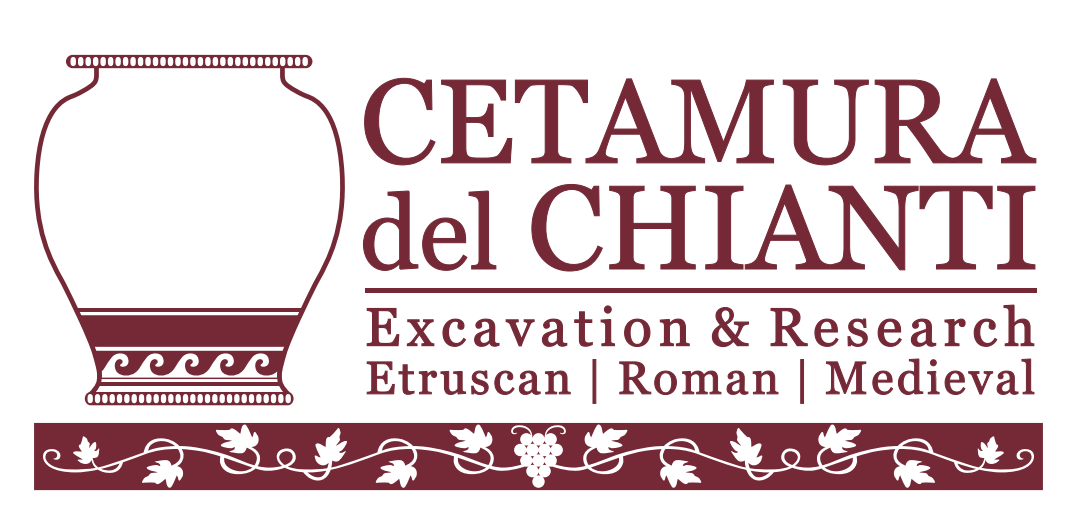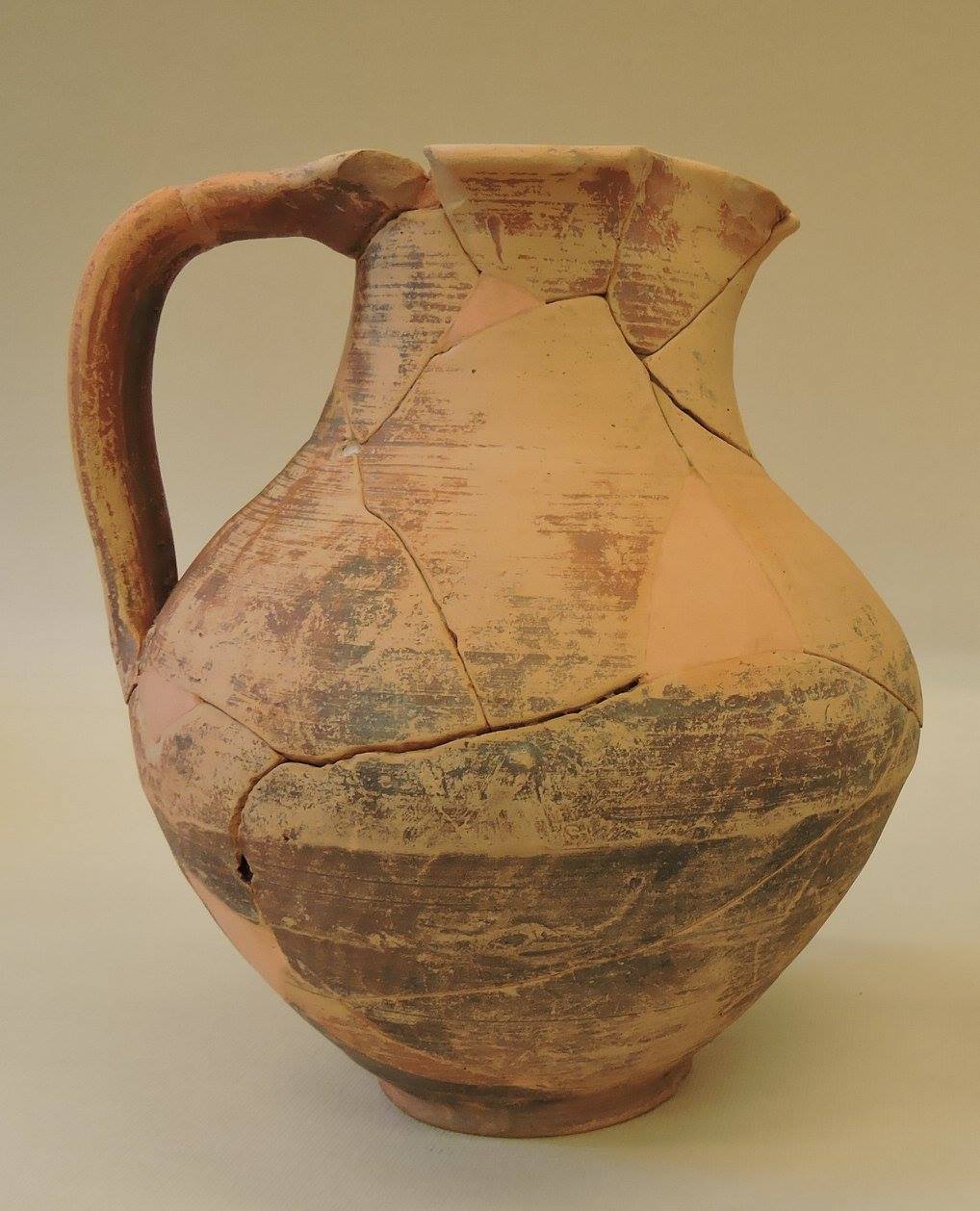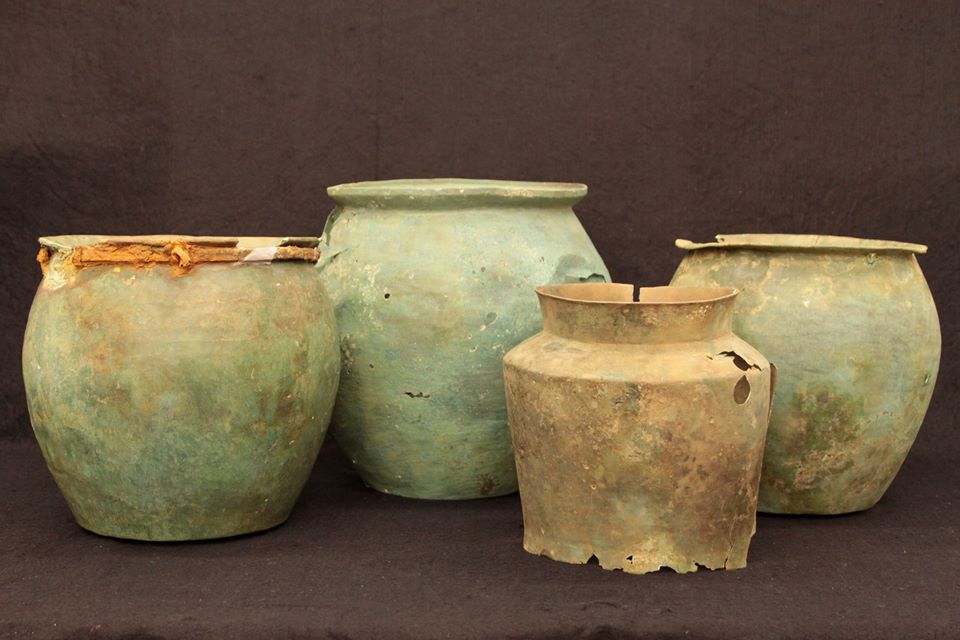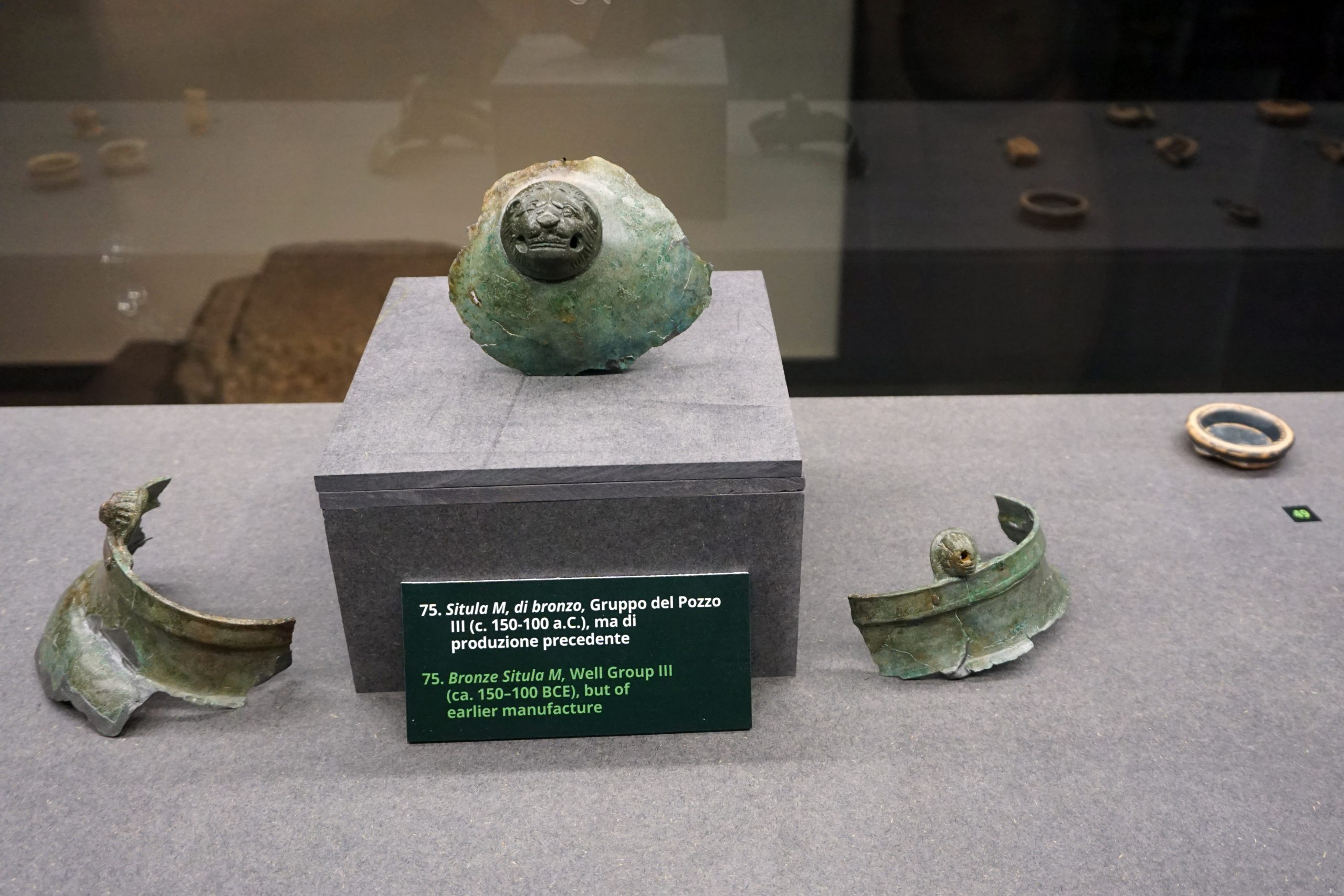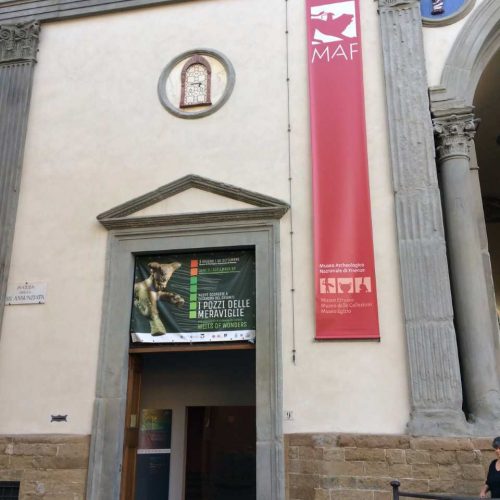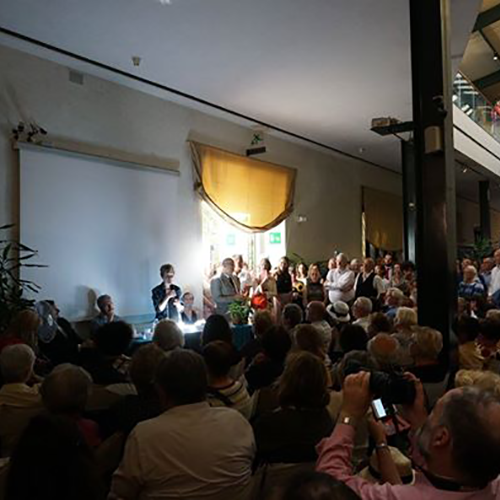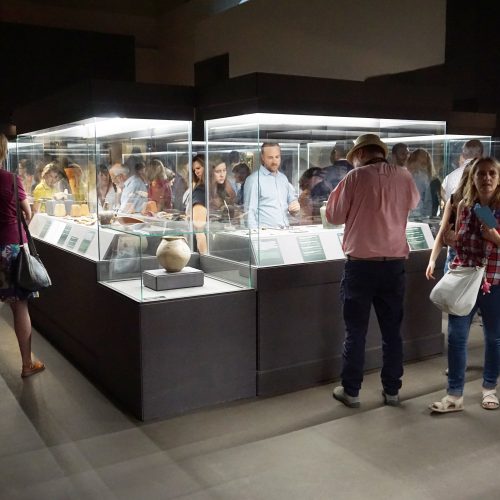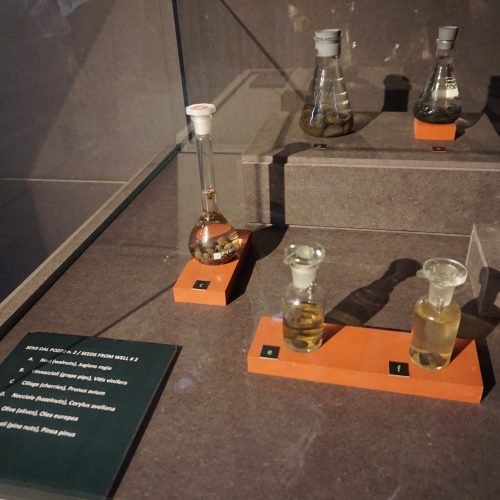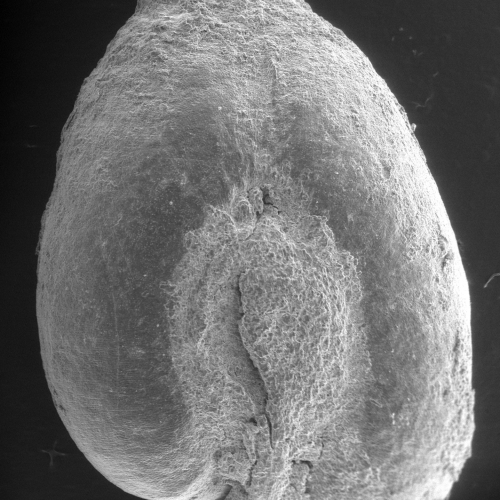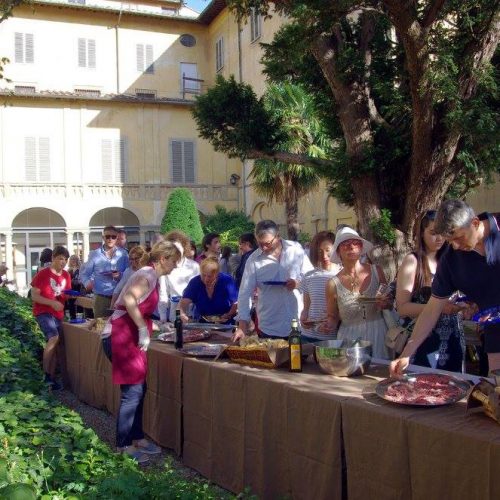NEW DISCOVERIES AT CETAMURA DEL CHIANTI
Wells of Wonders
The exhibition, called in Italian I pozzi delle meraviglie , Nuove scoperte a Cetamura del Chianti, was displayed from June to September, 2017, in the Museo Nazionale Archeologico of Florence (MAF) [d., f.]. The well-attended opening featured greetings from Dr. Stefano Casciu, Director of the Polo Museale of Tuscany, Dr.Mario Iozzo, Museum Director, and Professor Frank Nero, director of the Florida State University Florence Study Center [e.].
The main themes of the show were focused on the finds from two wells created by the Etruscans and reused by the Romans, which were excavated by Florida State University in collaboration with the archaeological firm Ichnos: Archeologia, Ambiente e Sperimentazione (president, Francesco Cini), under a permit from the Soprintendenza Archeologia Belle Arti e Paesaggio per le province di Siena, Arezzo e Grosseto. Dr. Pierluigi Giroldini of the Soprintendenza supervised the project as inspector for Cetamura. All of the restoration of objects was done at Studio Arts College International (SACI), under the department of conservation headed by Dr. Roberta Lapucci, showcasing work by the students of Professor Nòra Marosi of SACI. The design concept, created by SACI student Danielle Gorton, was articulated in posters, wall panels and labels under the direction of Professor Camilla Torna.
The show was curated by Dr. Nancy de Grummond, who served as editor for the catalog, with major research contributions by Dr. Lora Holland and Dr. Laurel Taylor of the University of North Carolina-Asheville. Jessica Rassau coordinated the installation of the exhibit with assistance by museum interns from Florida State. The Comune of Gaiole in Chianti, with support provided by Mayor Michele Pescini and the wine growers of Chianti, offered a reception in the garden of the Museum [h.].
THE WONDERS
The wells yielded a fascinating array of receptacles that had been used to retrieve water but accidentally fell into the waters [a., b., c.]. From Well # 1 came 14 bronze Etruscan and Roman vessels—13 situlas (buckets) and 1 pitcher. There were also parts of wooden buckets, and a number of ceramic water jugs. The wells had ritual purposes with offerings being cast into the waters, such as miniature votive cups, coins, tokens of fortune and astragali.
BIOARCHAEOLOGICAL MATTER
Of very particular importance were the biological remains secured at every level of the wells, studied and published by scientists from leading Italian and European laboratories [g.]. From the two wells came a total of more than 4,500 waterlogged grape seeds, under study and published in the catalog as follows: Nathan Wales, Jazmin Ramos Madrigal and Thomas P. Gilbert (DNA); Laurent Bouby, Sarah Ivorra and Jean-Frédéric Terral (morphometrics), proved that the grapes were cultivated for wine over a long period of Etruscan and Roman times in Chianti. Plant remains were studied by Marta Mariotti Lippi and Miria Mori Secchi (pollen), Gianna Giacchi (wood) and Elisabetta Castiglioni, Michela Cottini and Mauro Rottoli (nuts, seeds, wood and charcoals). Animal bones were analyzed by Ornella Fonzo (mammals) and Chiara Corbino (avian remains).
TECHNIQUES OF EXCAVATING IN WELLS
The logistics and security measures for descending into wells respectively 106 feet and 25 feet deep were controlled by Ichnos, led by President Cini assited by Lorenzo Cecchini, Andrea Violetti, Eva Cincar, Ludovico Giannini and Giulia Gallerini. The challenge was to provide sufficient light and air as water was pumped out and excavators descended.
